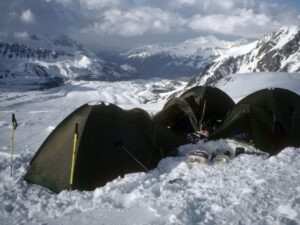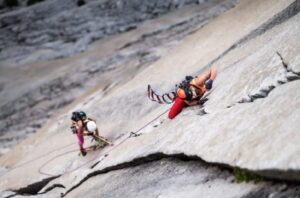What is a bothy, exactly?
For those not in the know (such as myself before writing this), a bothy is a suitably British-sounding word for minimalist cabins located throughout the United Kingdom.
There are about a hundred of these free-to-use way stations for hikers, and a motivated young woman has decided to visit all of them. Juls Stodel started in June 2022 and is now halfway through her journey, having visited 50 bothies.
After eight months of hiking and traveling, Stodel’s Instagram account offers hundreds of posts of beautiful, rolling countryside — and the quaint bothies that provide refuge for hikers like her. Her account could serve as an excellent promotion for UK tourism, showcasing the tranquil open spaces that define so much of the island’s geography and culture.
Ver esta publicación en Instagram
Stodel plans to spend at least one night in each bothy. The shelters are maintained by the Mountain Bothies Association, the website of which offers a handy map for locating them.
For Stodel, they’re not just a way of supporting hillwalkers. They’re also a destination unto themselves, reflecting a culture of community and fellowship.
“Bothy culture itself — strangers sharing whatever they have; fuel, food, or just stories — restores my faith in humanity,” she said in an interview with The Great Outdoors. “It’s a culture based in trust, respect and mutual appreciation for wild places and the small piece of history we have the privilege of sheltering under for the night. I may have set off on this journey solo, but there’s no way I’ve been doing it alone.”
Ver esta publicación en Instagram
The Bothy code
For many hikers that have experienced the UK, bothies remain one of the best parts of the experience.
Usually located high in the mountains, bothies offer shelter for anyone who needs it. Many bothies are on private land, but that doesn’t make them off-limits for hillwalkers. The idea stems from a different attitude toward private property than what many Americans, for example, are accustomed to.
Europe’s “right to roam” concept means that hikers can cross private property — as long as they follow a few basic rules, like staying away from homes and outbuildings. The right to roam exists in different incarnations across the UK and other European countries. Scotland, Norway, and Sweden have a particularly robust right-to-roam culture that existed long before it was codified into law, while England’s right-to-roam legislation only covers 8% of the land there.
When Stodel lost her flat in June 2022, she put her worldly possessions in storage and became a full-time hillwalker. She follows the Bothy Code, which entails just five simple rules, and keeps a map of all 100 bothy routes on her Ordnance Survey app.
“Is this a ridiculous idea I’ve thrown together in just over a month? Yes. Yes it is,” she wrote at the start of her journey. “But God loves a trier and we’ll see how far I get. I can’t quit too soon after all; I have no home to go back to!”
Ver esta publicación en Instagram
‘Right to roam’ under attack
Unfortunately, Stodel’s quest isn’t merely an exercise in personal freedom. The “right to roam” was recently rescinded for Dartmoor National Park after a highly public lawsuit from a private landowner. It’s possible the government may reverse that decision with legislation, especially after widespread protests from hikers, including Stodel, who published several posts from rallies aimed at protecting the right to wild camping.
What’s clear — as Stodel wrote in the post above — is that hikers need to fight to keep public lands available to everyone.
“When one wealthy man can so quickly have our rights rewritten, this protest became about more than ‘just’ Dartmoor or ‘just’ wildcamping; it became about the erosion of the public’s connection to nature in order to line the pockets of the already rich,” Stodel wrote. “It became about the 99% of us that can only access 8% of the land, and the 1% that own half of it…Future generations cannot know how to protect our countryside if they aren’t allowed to love it, to find joy in it, to heal in it.”






